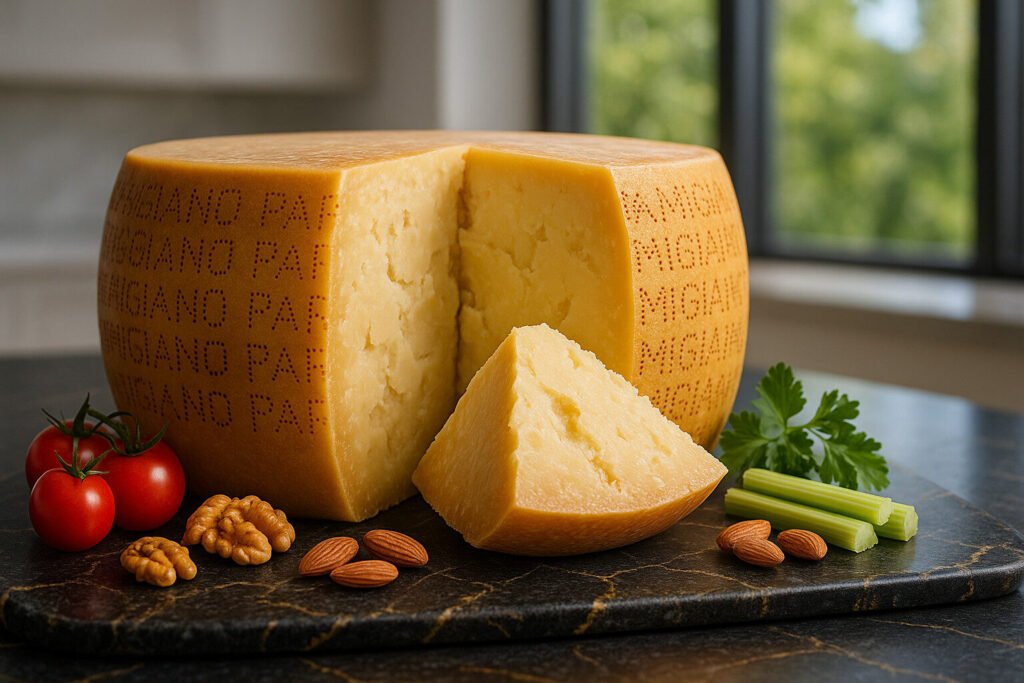Parmigiano Reggiano Cheese
Definition and Scope
Parmigiano Reggiano is a hard, granular cheese originating from specific provinces in Italy. It holds Protected Designation of Origin status, meaning its production is legally restricted to its region of origin. This cheese is made from raw cow’s milk and aged for a minimum of twelve months.
The name Parmigiano Reggiano is legally protected and cannot be used for similar cheeses made outside the designated area. Its production follows a strict traditional method that has remained largely unchanged for centuries. The cheese’s characteristics are defined by its lengthy aging process and unique terroir.
Production Process
Production begins with partially skimmed raw milk from cows fed on local grasses and hay. The milk is naturally fermented using whey from the previous day’s production as a starter culture. Rennet is added to coagulate the milk, forming curds that are broken into tiny granules.
The curds are cooked at precisely 55°C before being molded into wheels. Each wheel is brined for approximately 20 days to develop its rind and flavor. The final stage involves aging for 12-36 months in temperature-controlled storage rooms.
Sensory Profile
Parmigiano Reggiano develops a hard, gritty texture that crumbles easily when mature. Its pale yellow interior features tiny, white crystalline spots formed by amino acid clusters. The cheese becomes increasingly granular and crystalline with extended aging.
The flavor profile is complex with pronounced umami, nutty notes, and subtle fruitiness. Aged varieties develop stronger savory characteristics and a distinct saltiness. The aroma is fragrant and persistent, characteristic of well-aged hard cheeses.
Culinary Applications
This cheese is traditionally grated over pasta dishes, risottos, and soups to enhance flavor. Its crystalline structure makes it ideal for grating while maintaining texture when melted. Many chefs use Parmigiano Reggiano rinds to enrich broths and stews.
Beyond grating, it is served in chunks as a table cheese, often accompanied by fruits and nuts. The cheese’s intense flavor means small quantities can significantly impact dishes. It pairs exceptionally well with full-bodied wines like Lambrusco and Barbera.
Regional Characteristics
Authentic Parmigiano Reggiano comes exclusively from the provinces of Parma, Reggio Emilia, Modena, and parts of Bologna and Mantua. The specific microclimate and soil composition of this region contribute to the milk’s unique qualities. Local regulations govern every aspect of production from cattle diet to aging facilities.
Each wheel is fire-branded with the distinctive dotted rind markings that certify its origin and age. The Consorzio del Formaggio Parmigiano-Reggiano rigorously monitors quality standards and authentication. Regional production methods have been refined over eight centuries of continuous tradition.

